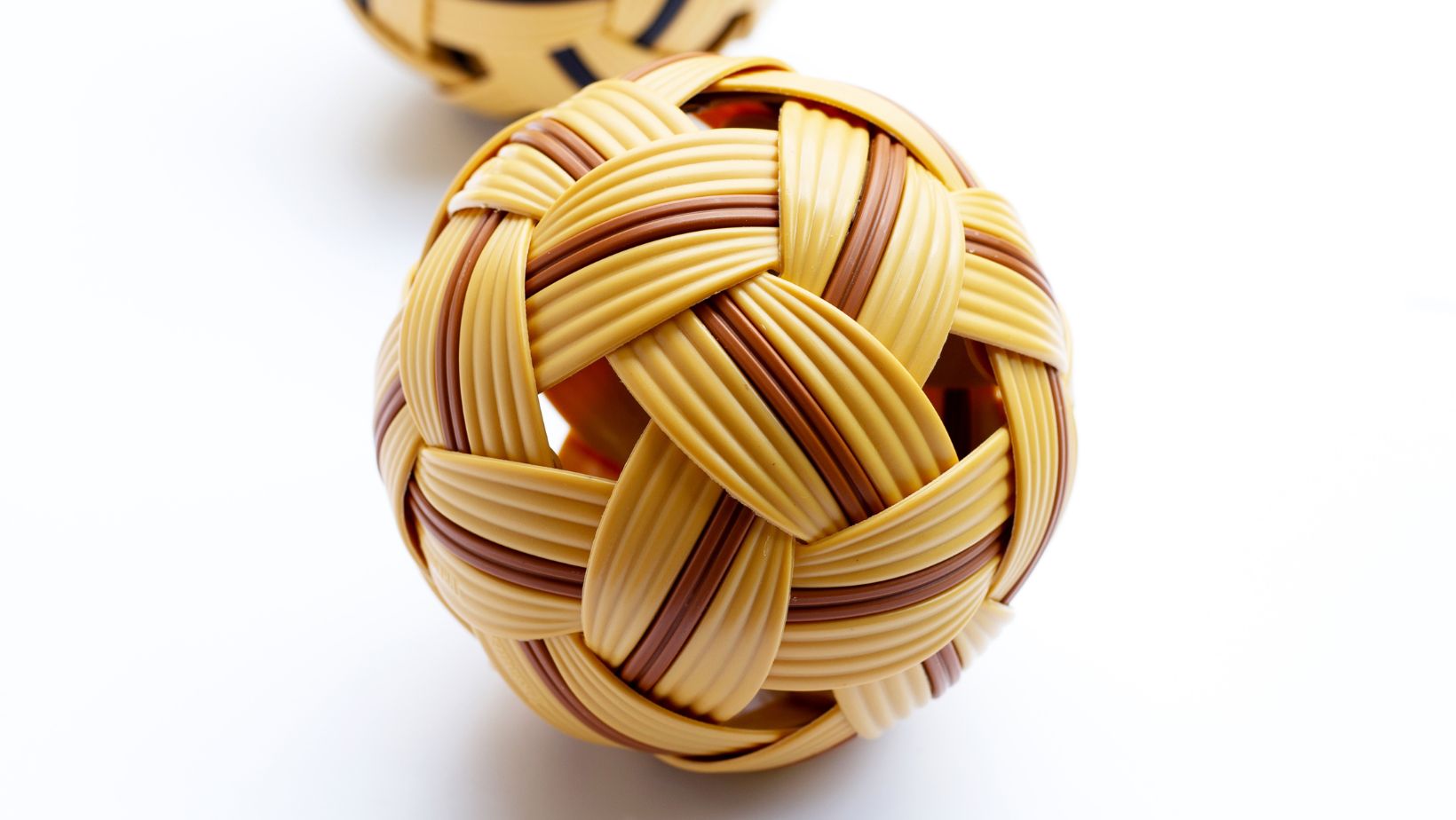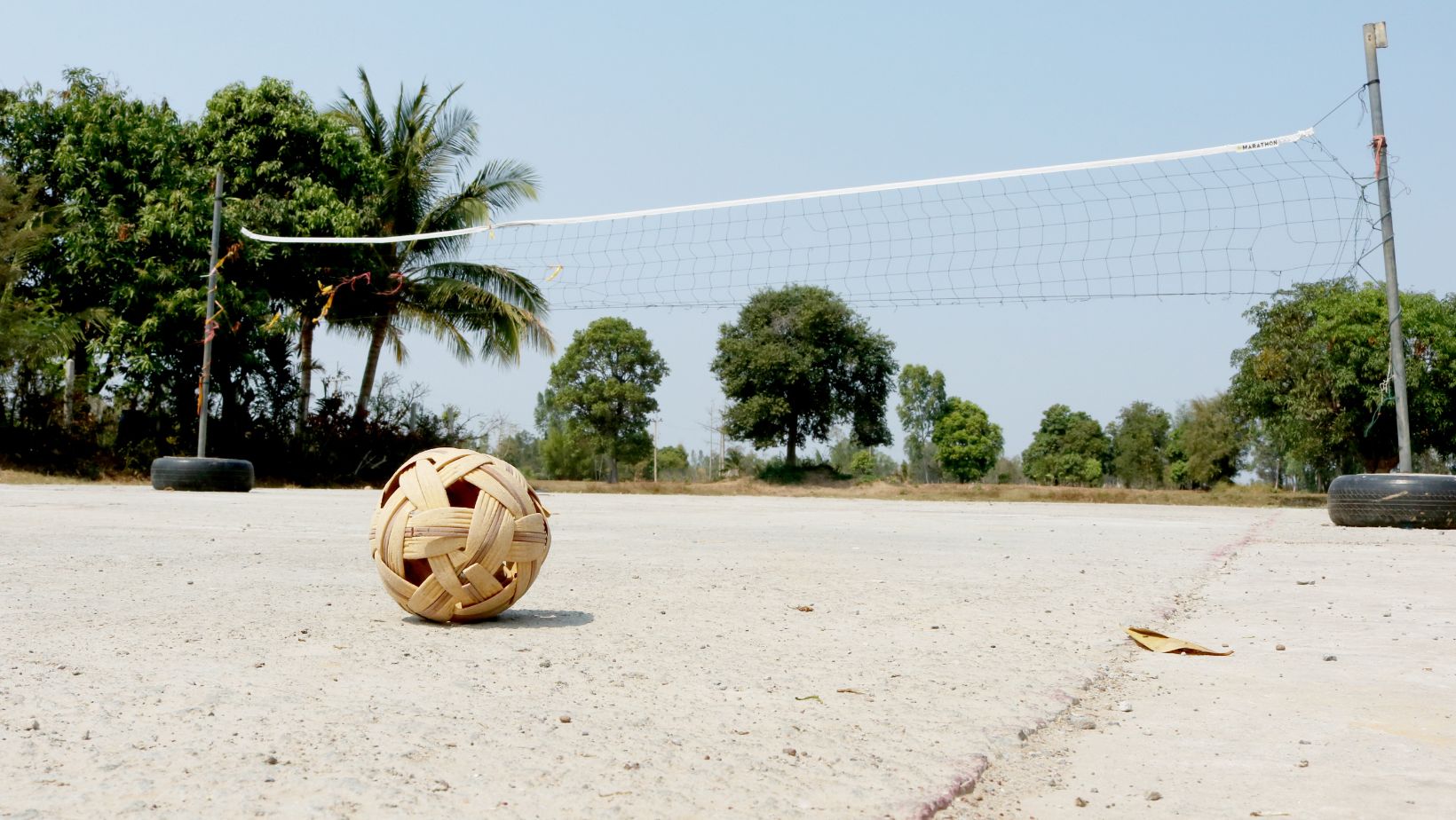
Sepak Takraw, a sport that seamlessly combines the elements of soccer, volleyball, and gymnastics, finds its roots deeply embedded in the cultural history of Southeast Asia. Tracing back to the 15th century, it’s believed to have originated in Malaysia or Indonesia with historical evidence suggesting its presence during the Malacca Sultanate era. This game traditionally known as “Sepak Raga” was primarily played by the royal court and later evolved into a competitive sport among the locals.
Sepak Takraw Origin
Early Beginnings and Etymology
Tracing the roots of sepak takraw leads to a fascinating journey back in time. This sport, often compared to volleyball for its use of a ball and a net but where players use their feet, head, knees, and chest to touch the ball instead of their hands, has an intriguing history. Its name itself offers clues about its origins: “sepak” is Malay for kick or smash, while “takraw” in Thai means ball. The melding of these words reflects the game’s widespread appeal across Southeast Asia. Historical evidence suggests that sepak takraw might have originated in the 15th century or earlier within the Malacca Sultanate of present-day Malaysia, making it one of the region’s age-old sports.

Several historical texts hint at a version of this game enjoyed by royalty and common folk alike, showcasing its deep cultural ties. For instance, there are mentions of games resembling sepak takraw being played in the royal courts of Indonesia as part of ceremonial occasions. This not only highlights its longstanding presence but also underscores how integral it was to social and ceremonial gatherings.
Regional Spread and Popularity
Sepak takraw’s journey from local pastime to international sport is marked by gradual regional spread before gaining broader popularity. Initially confined to Southeast Asian countries like Malaysia, Thailand, Indonesia, Laos, and the Philippines, each region adapted the game to its unique cultural contexts. For example:
- Malaysia emphasized skillful foot techniques.
- Thailand focused on speed and agility.
- Laos contributed distinctive styles that added diversity to how sepak takraw was played.
The sport’s official codification occurred in 1960 when representatives from these countries met to standardize rules—a pivotal moment that transformed sepak takraw into a competitive international sport.
Evolution of the Rules

Tracing back to the sepak takraw origin, it’s fascinating to see how the game has evolved over centuries. Initially, the game had minimal rules, reflecting its casual play in villages across Southeast Asia. However, as it gained popularity and became more structured, so too did the rules governing it.
The transformation into a competitive sport led to significant changes aimed at standardizing gameplay. Early versions of sepak takraw allowed for considerable variation in team sizes and ball types. Yet today’s game follows strict guidelines set by international bodies like the International Sepaktakraw Federation (ISTAF). These include:
- Team composition: Teams are now precisely three players each.
- Court dimensions: A standardized court size ensures uniformity across competitions.
- Equipment specifications: The ball must meet specific size and weight requirements.
These adjustments have been crucial for sepak takraw’s inclusion in multi-sport events like the Asian Games and SEA Games, helping it gain recognition on a global stage.
Another pivotal moment in the evolution of sepak takraw rules was the introduction of synthetic balls in competition. This marked a departure from traditional rattan balls, offering more durability and consistency in play. It represented not just an advancement in equipment but also underscored the sport’s ongoing modernization efforts while still honoring its rich heritage stemming from its origin.
Notable Players and Teams
Sepak Takraw Origin, with its origins deeply rooted in Southeast Asia, has blossomed into a thrilling sport recognized worldwide. This game, which combines the agility of soccer with the finesse of volleyball, has produced numerous standout players and dominant teams over the years.
Thailand emerges as the powerhouse in sepak takraw’s history. It’s not just their mastery of the sport but also their innovative strategies that have set them apart. The Thai national team has consistently dominated international competitions, including the King’s Cup World Championships. Among their ranks is Regu superstar Prawit Waorachet, whose acrobatic skills and powerful spikes have earned him widespread acclaim.
